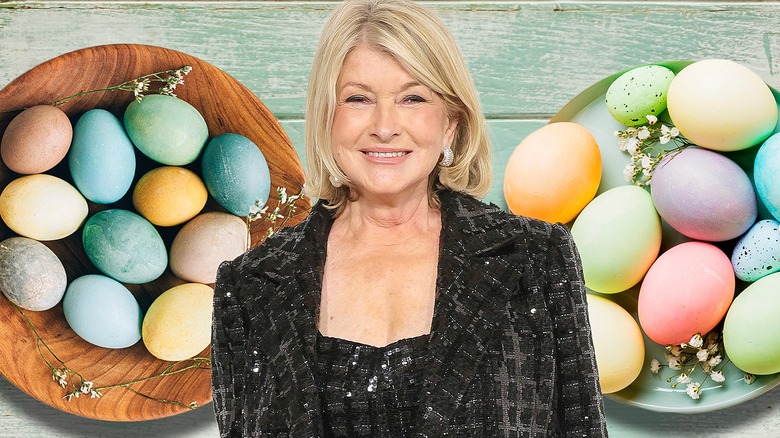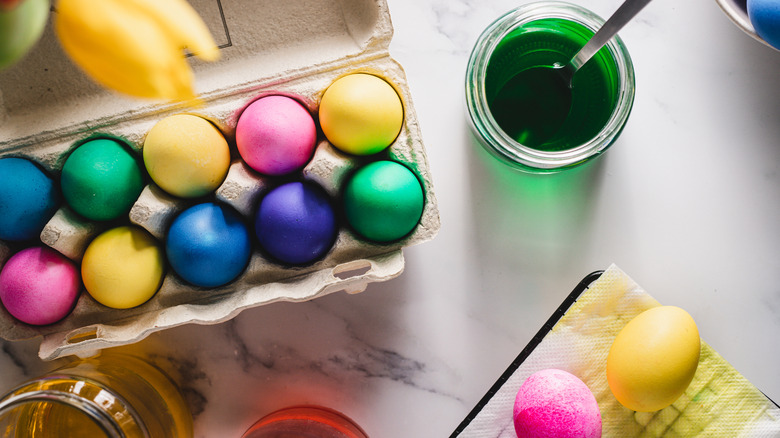The Clever Way Martha Stewart Dyes Multiple Easter Eggs At The Same Time
Every Easter is filled with preparing hot cross buns and glazed ham, decorating the house, or organizing activities, yet nothing is as painstaking as dying the eggs. Dropping all the eggs one by one into a bowl filled with dye feels quite monotonous, but Martha Stewart has a trick for dying several Easter eggs at once.
As kids, decorating Easter eggs consisted of boiling all the eggs and then heating a separate batch of water for a small bowl of food coloring, in which each egg must have its allotted time. If you tried to crowd the bowl or took the egg out too quickly, it would come out sheer or streaky, forcing you to put it back in the bowl. Thankfully, Stewart has an easy fix for this. Se uses several large pots to mix the food coloring, big enough for several eggs to fit into.
Using a strainer, she dips a handful of eggs into a bowl of vinegar before placing them in the pots. Perhaps the most genius trick, Stewart opts for both brown and white eggs when whipping up the Easter decorations. This way, each egg will take on different hues from one color. The time-saving trick gives the eggs time to develop the shades fully, especially if you'd prefer them to have a more opaque color.
What else can you use to dye Easter eggs?
Like many tutorials, Martha Stewart's relies on food coloring to dye the eggs, but you can find ingredients in your fridge or pantry for the same results. There are a multitude of plants to use for natural dye, especially if you're wary of the health effects from food coloring or simply want to avoid food waste by using up what's left in the kitchen. Either way, plants like beets, onion skin, turmeric, and blueberries can yield brilliant reds, dusty earth tones, rich golds, and soft blues.
The only downside to dying your eggs with plants is the lengthy process it requires. The plants will need to simmer for around half an hour, followed by a two-hour strain, and then the eggs need to soak in the water overnight. While it does take a while to dye, Stewart's technique can still be used with natural dyes. Use large containers to place the eggs in so several can be dyed at a time. As the water infuses the eggs with their color, it gives you plenty of time to work on all your Easter recipes.

